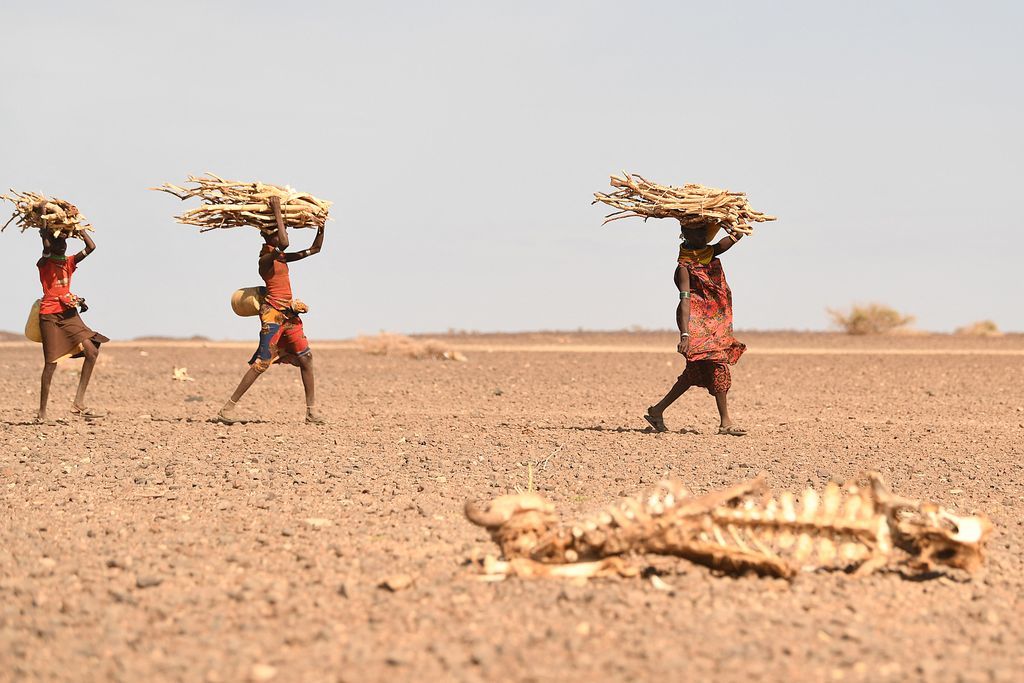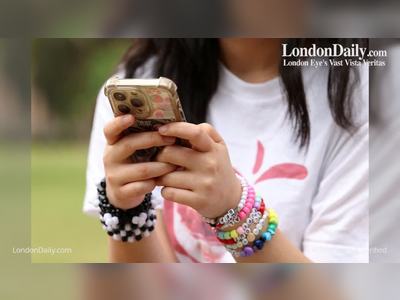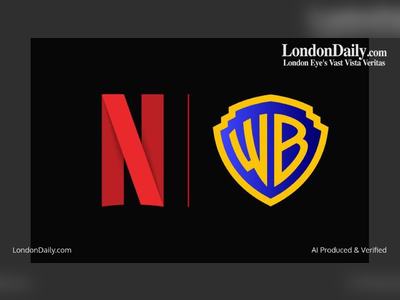
It’s hot and dry out there, but it ain’t as bad as 1540 (yet)
A dream told her where to dig. The bone-dry, blazingly hot year of 1540 had parched some marshland she knew, and that’s where Anna Schmidin headed, probably from her home village of Eppisburg in Bavaria. Her vision offered remarkably precise coordinates, and she zeroed in on a pot exposed by the receding waters, among the desiccated sedge. It proved unexpectedly heavy, and it’s satisfying to imagine that the mud beneath was still soggy enough for it to pop free with a squelchy glug. When Anna cracked the seal, she found 900 silver coins from the era of Augustus, the Roman emperor who founded the city of Augsburg, a day's walk to the southeast of her home.
Anna was one of the few winners of the nearly year-long megadrought that gripped western and central Europe that year, from France to Poland. For most, it was a grueling year. Temperatures spiked over 40 degrees Celsius; forests and towns burned to cinders; rivers ran dry; cattle died in their droves; and disease spread around stagnant waterways.
Unfortunately for us, 1540 is far from being an abstract historical curio. Only last week, Andrea Toreti, a senior scientist at the European Commission's Joint Research Centre, warned that 2022 now risked being the driest year in the past 500. That now sets us face-to-face with 1540 as the statistical low-water mark that we really don't want to supplant in the record books. The signs are that it could be even harder for us to survive a rerun of 1540 than it was for the peasants of the 16th century. While they faced dysentery and sky-high bread prices, the rain deficit and collapse in water levels that they endured would risk upending our civilizational model. They simply didn't need the pharaonic amounts of water that we do for high-yield crops and cooling power plants.
Incendiary politics
In stark contrast to Anna, Heinrich Diek had a particularly lousy 1540. These were days when the religious politics of the Protestant reformation were as incendiary as the weather, and the Continent descended into paranoid witch hunts over why dozens of tinder-dry, narrow-laned, thatched German and Austrian towns were going up in smoke. For some Lutheran Germans, the culprits had to be the Catholics. For Austrians, the arsonist bogeymen could only be agents of Süleyman the Magnificent’s rampant Ottomans, who had been at the gates of Vienna in 1529 and who were now bloodying the noses of the Venetians.
For Diek, a huge conflagration in the town of Einbeck in Lower Saxony spelled arrest, torture, execution and exposure in a cage.
The blaze at Einbeck in high summer was a tragedy, killing potentially as many as 500 people. The spark was supposedly lit by a drunken shepherd. These were, after all, especially easy times to get roaring drunk, as the fierce sun was fortifying staple wines into sherry-like vintages of dizzying potency. The shepherd promptly sobered up and said that he’d been put up to starting the fire by Diek, a bailiff of patrician stock overseeing holdings in a hamlet to the north of Einbeck, who was hostile toward Lutheranism. Faced with the glowing irons, Diek started to spill details of a conspiracy of extraordinary but implausible dimensions that led straight to Duke Heinrich the Younger of Brunswick, leader of the Catholic princes, who was allegedly doling out clinking purses of cash for arson attacks on Protestant towns.
Things only spiraled from there. The Protestant estates demanded that Holy Roman Emperor Charles V take action. The Pope was blamed. Even Martin Luther, leading luminary of Protestantism, weighed in. Duke Heinrich pushed back hard, noting that fires were also hitting non-Lutheran domains such as his own.
Were any of these arson accusations true? How much of this was simply delusional scapegoating in an angst-ridden, fanatical Europe? It’s hard to say through the fog of time, but it’s clear that the sweltering weather (and strong wines!) were pushing the political powder keg closer to the fire. While it’s perfectly credible that accidental sparks from cooking and forges could have started many of the blazes, there was precious little such skepticism around back in 1540 to save Diek. Should you visit Einbeck today, the tourist office suggests a visit to the Diek Tower, where there’s a cage — in peculiarly good condition — in which his shattered and progressively decomposing corpse was supposedly dangled for a year as a deterrent to any other budding pro-Papist arsonists. Thankfully, there’s also a vintage car museum for the more squeamish.
Blasts from the past
The year of Diek's death was the worst in a series of fierce-weathered years. In the 1530s, wells ran dry and there were infestations of caterpillars and mice. In 1535, a devastating famine struck Transylvania and corpses were found in the streets, their mouths stuffed with grass. But it's unlikely that any of this had steeled people for what was about to happen next.
Some of the descriptions of 1540 have an apocalyptic air. Forest fires with the intensity we now associate with Mediterranean infernos raged from the Vosges mountains in eastern France to Poland. Ghoulish accounts from Switzerland and the Polish city of Kraków describe a peculiar red hue to the sun, or the sun hanging like a pale disc in the sky, probably the effect of smoke palls and aerosols from the burning forests. Grapes withered to baked raisins on the vine.
Today's fears about the level of the Rhine are nothing new. At some points in 1540, it was possible to wade across major rivers such as the Rhine, Seine and Elbe. In the French city of Besançon, people sheltered in cellars from 9 a.m., and quarry workers were exempted from their back-breaking labor. In the German city of Ulm, parsons were instructed to pray for rain. Cracks opening in farmers’ fields were so deep you could put your foot in them. Near Lake Constance, the price of water overtook that of wine. Just as French villages need water delivered by truck in this year’s drought, people had to take similar emergency measures in 1540. Donkeys and carts were used to supply communities as diverse as the Swiss village of Goldiwil and the Italian city of Parma.
 At some points in 1540, it was possible to wade across major rivers such as the Rhine, Seine and Elbe
At some points in 1540, it was possible to wade across major rivers such as the Rhine, Seine and Elbe
People were vulnerable in exactly the core economic sectors that we fret about today: agriculture, river transport and hydropower. Cattle, poleaxed by heat-stroke, keeled over. River trade severely contracted. Water mills — the creaking technological heart of the 16th-century rural economy — fell silent. This all conspired to send the price of staples such as milk, cheese, bread and flour soaring.
Weather warning
It is the Swiss historian Christian Pfister, professor emeritus at the University of Bern, who has led the way in establishing the credentials of 1540 as a year that we should be paying more attention to. Basing his work on more than 300 original sources, he has helped shed a light on what it felt like to live through those long, hot months — and why we should be taking greater heed.
Pfister has been a pioneer in arguing that we need to establish a longer historical memory of climate events, and he uses a wide array of original accounts, harvest records, grain prices and tree rings to piece together a perspective that extends way back before modern meteorological instruments. Along with the geographer Heinz Wanner, he has mapped out a climate history of the entire past millennium. It’s a field of study that he insists can help those seeking to establish scientific models to understand climate change. He says, for example, his approach is helping etch out a new picture of how warm, dry springs act as a precursor to extreme climate events, although he concedes the topic is still improperly understood.
When it comes to 1540, Pfister is widely seen as one of the doyens, although he’s had to push back against some skeptics among tree-ring counters. Intriguingly, even such a world expert has no idea why it was such a bad year. When quizzed whether it could be something to do with solar activity or volcanoes, he simply chuckles and replies: “This is really an enigma I cannot solve.”
What Pfister is quick to point out however is that, while the people of 1540 weathered their spectacular drought without cataclysmic suffering, we are in no position to be complacent. Perhaps counterintuitively, our technological advances have, in some key respects, left us especially vulnerable.
Only a minor frisson of social tension appears in the sources collected by Pfister. In the Swiss village of Rupperswil, for example, peasants squabbled with their squire over too much water from the brook being diverted into his carp pond. Generally, however, the weather does not seem to have triggered any significant unrest or revolts. Our ancestors also had a peculiar one-off advantage that we can no longer depend upon: There is a contemporary account of unusually abundant dews in Alpine meadows that may well have been caused by evaporation from what were then considerably larger glaciers. Alas, that's hardly something we can bank on these days.
Disease did indeed take its toll, but harvests held up. Grain prices rose, but supplies did not slump to famine levels. More robust crops like oats and rye prospered in central Europe. These were unquestionably tough times but, in the great stream of history, not all that lethal compared with later decades of the century.
 Swiss historian Christian Pfister's main warning is that we might not be so lucky the next time around
Swiss historian Christian Pfister's main warning is that we might not be so lucky the next time around
“The drought in the 1530s appears, from a societal perspective, not to have been too bad. It was actually a period of pretty good harvests in most of Europe and demographic expansion. The cold, and wet, late 1500s in Europe was, on the other hand, really bad with decreasing harvests, diseases among domestic animals and multiple severe and long-lasting famines,” said Fredrik Charpentier Ljungqvist, associate professor of history and of physical geography at Stockholm University.
Pfister's main warning is that we might not be so lucky the next time around. While the high temperatures of 2003 (or indeed this year) were hailed as an unforeseeable Black Swan event, Pfister insists that interpretation was a classic example of insufficient historical memory, and says people need to look even further back. Even without the added perils of man-made climate change, a monster year like 1540 could be waiting in the wings. “Behind is another Black Swan that nobody pays attention to, and that is 1540,” he argued.
The fact that such a hot dry year took place, whatever its causes, should spark serious reflection about the effects that the recurrence of such conditions would have, especially as global temperatures continue to rise. Can trains replace barges on dried-out waterways? Will there be enough water to cool power stations? If there is a rerun of that dry, baking year, Pfister observes we would encounter difficulties that would never have dawned on anyone in the 16th century, but could prove systemically fatal to our way of life. At the top of the list, he cites the massive volumes of water demanded by fossil fuel and atomic power stations.
“If the technology fails, we are really in trouble," he said. "If there are too many nuclear power stations closed down for some reason or another, we are in serious trouble, because we have a civilization that depends 100 percent or 99 percent on electricity. And if it fails, everything fails. We cannot even go to the supermarket and pay for something. We cannot get gasoline. We are very vulnerable in this respect.”










